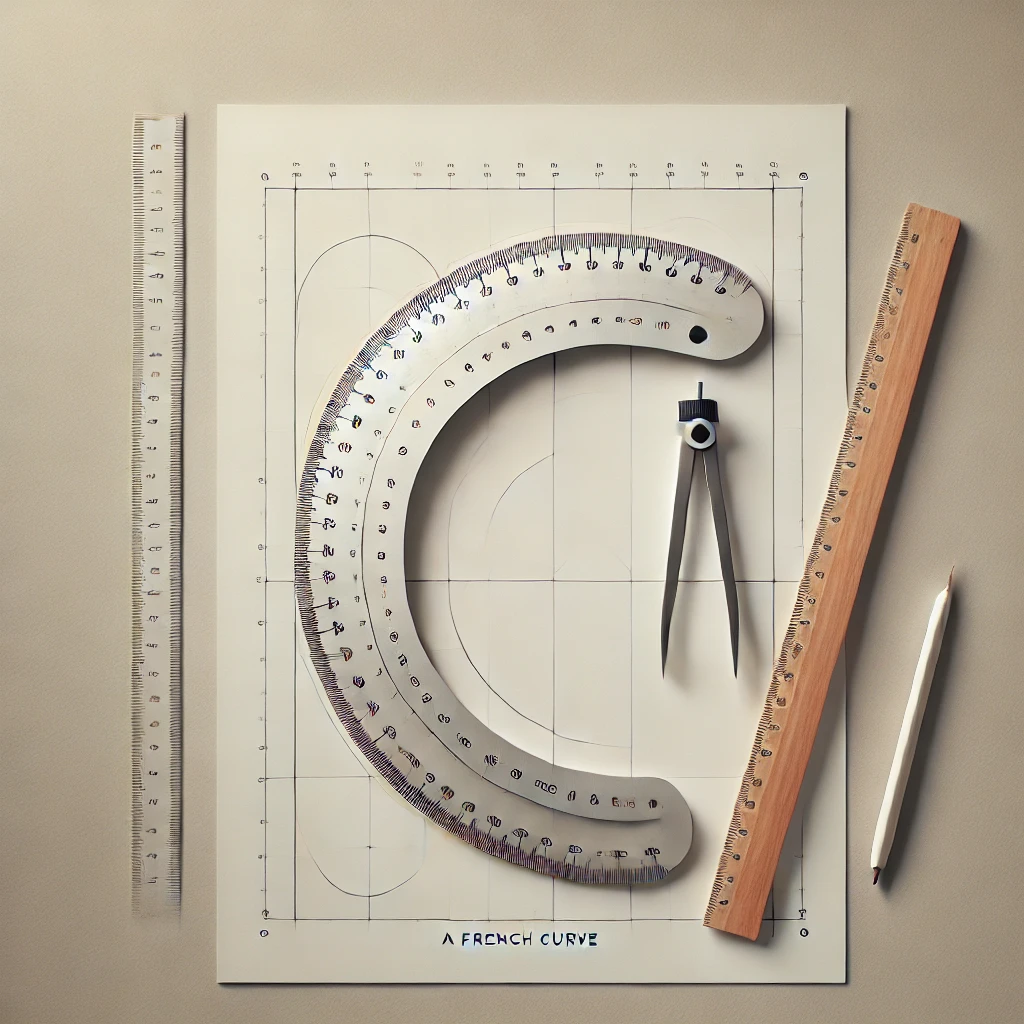A French curve is a drafting instrument to draw accurate non-circular curves intended to be used in architectural drafting, engineering and fashion design. It is not like straight rulers, being able to execute accurate arcs and flowing lines. The majority of French curves are manufactured of plastic that is transparent or durable plastic, whereas some of them are either metal or wood in order to be more robust.
Choosing the Right French Curve
A bigger French curve is best on big projects and the smaller ones are more convenient to fit in a tight space or detail work. Right choice of curve on the French curve ruler is vital in order to obtain the desired shape either on necklines, armholes.
Types of French Curves
French curves are independent tools dedicated to particular uses of the curvature, and their work is dependent on their utility Their size and form are dependent on their purpose. French curve sets have greater variation, normally containing three curves of different lengths of between 6 and 12 inches.
Industries such as shipbuilding and automotive design use specialized French curves which are differentiated to draw parabolas, ellipses, and hyperbolas (Burmester sets), waistlines (hip curve rulers), and collars and cuffs (cuff curve rulers). The different types are universal French curves and designer curve rulers hence needed when drawing, graphical plotting, and sewing.
Conclusion
To sum up, French curve is a flexible drafting instrument that is applicable in diverse disciplines in architecture, engineering and fashion design to make flawless curves in a smooth manner. When utilized separately or as a set, these templates allow one to do away with guesswork and increase precision in design work. It is very important to select the correct size of the French curve according to the project sizeand its requirement of the curvature and special options are also available according to different.
Knowledge of usage and selection of French curve where to use it and which French curve to use makes drafting designs and establishing patterns manually efficient and precise. Read more about How much does coolsculpting cost here. If you need info related How much does coolsculpting cost .
FAQS
What is size of a French curve
The size of a French curve can vary, but most are between 6 to 12 inches long. Some sets include different sizes for different needs.
How big is a French size
A French size does not have a fixed measurement; it depends on the type of French curve being used.
What does a French curve look like
A French curve is a flat tool made of plastic, metal, or wood, with smooth, curved edges to help draw neat and accurate curves.
Are all French curve the same
Not all French curves are the same; they come in different shapes and sizes to match different design and drafting needs.
